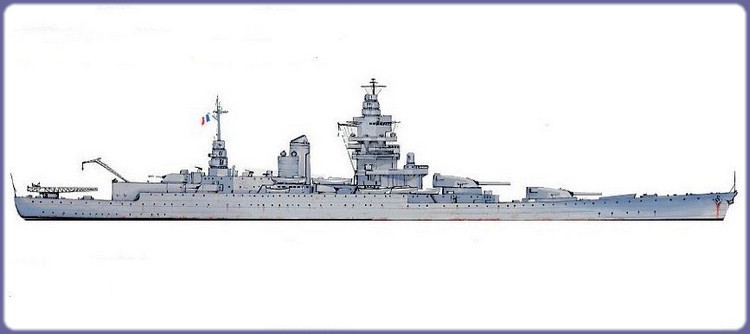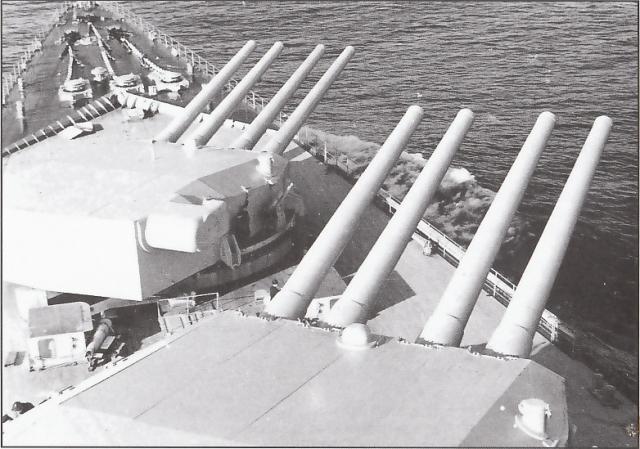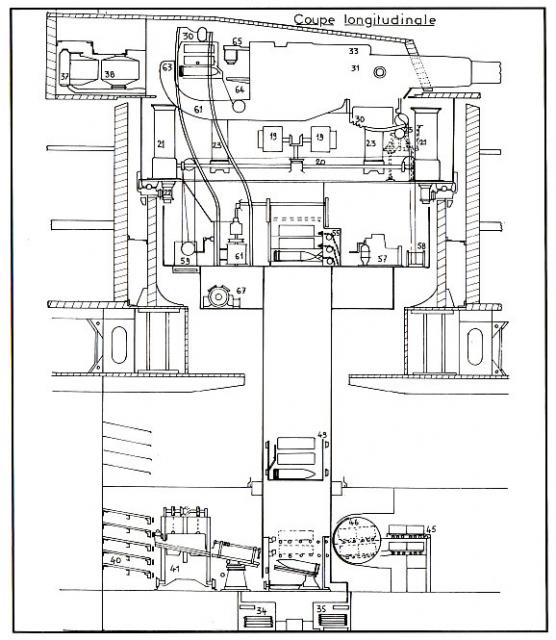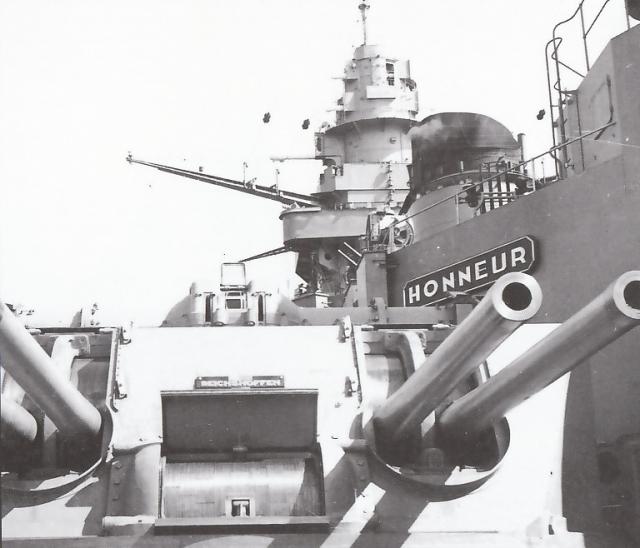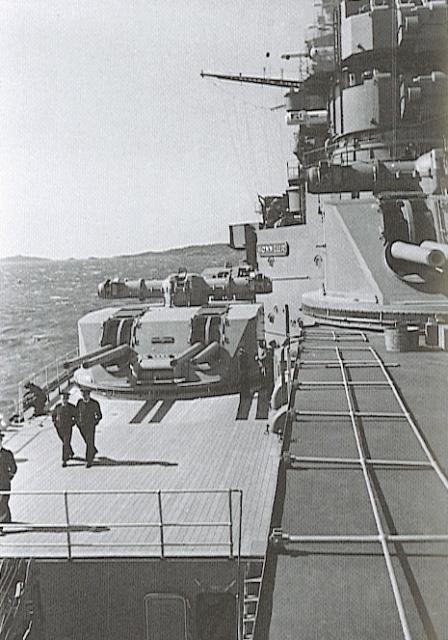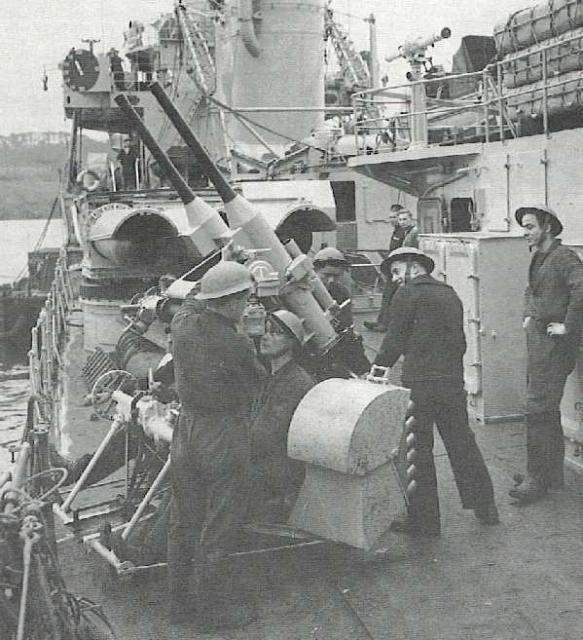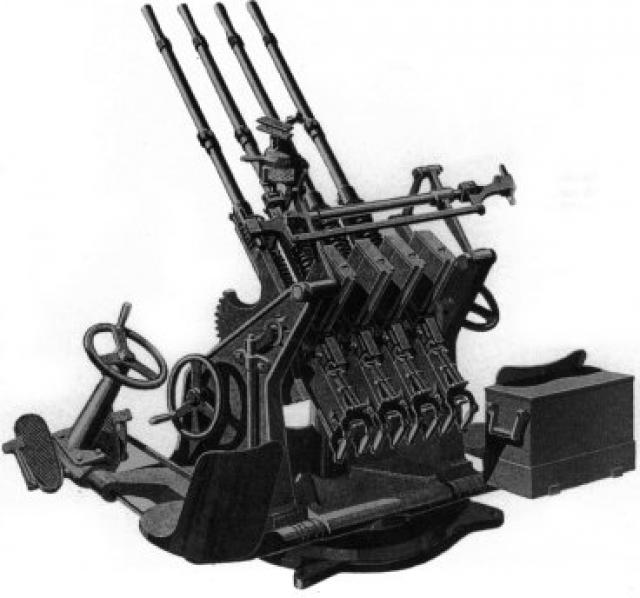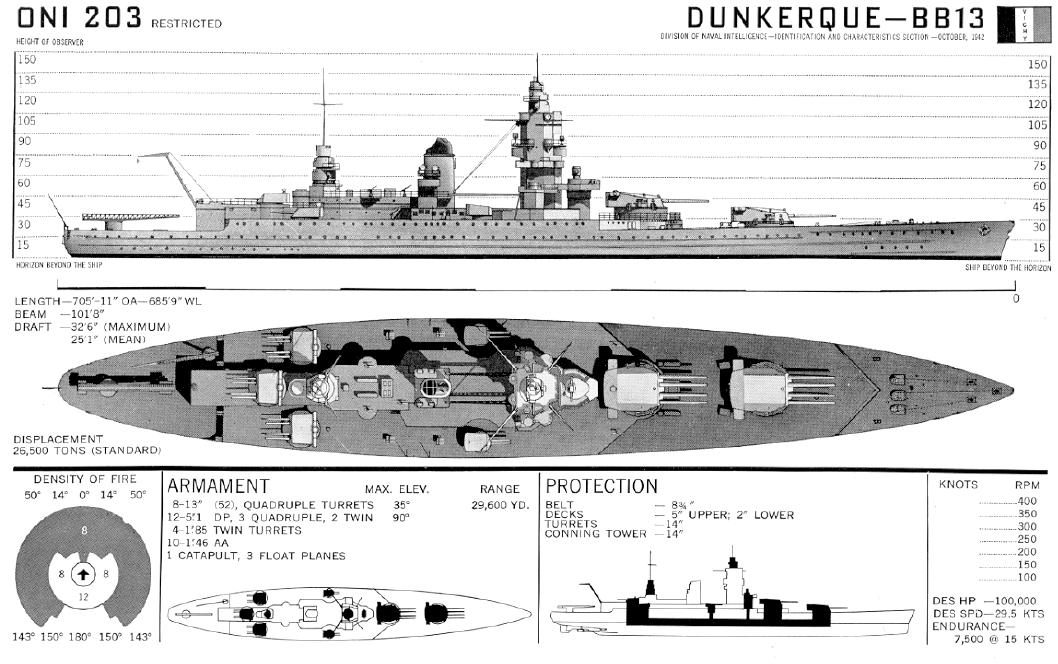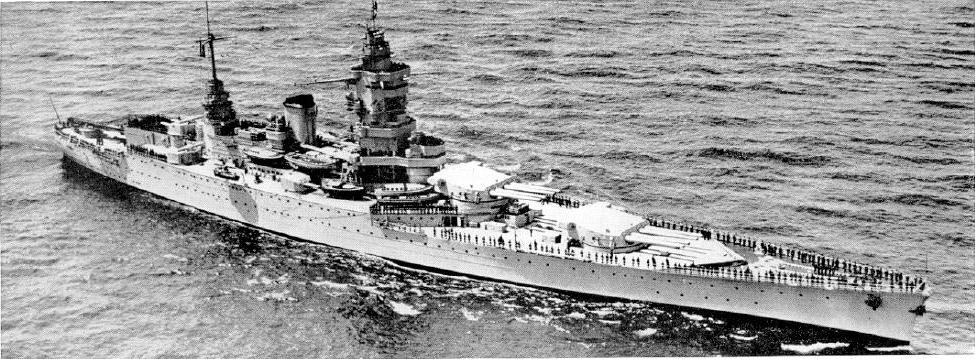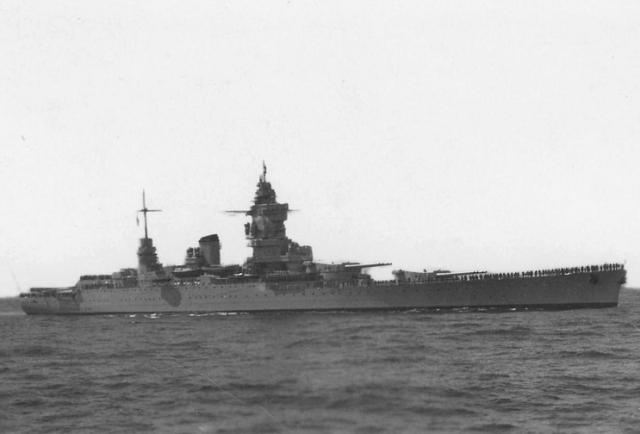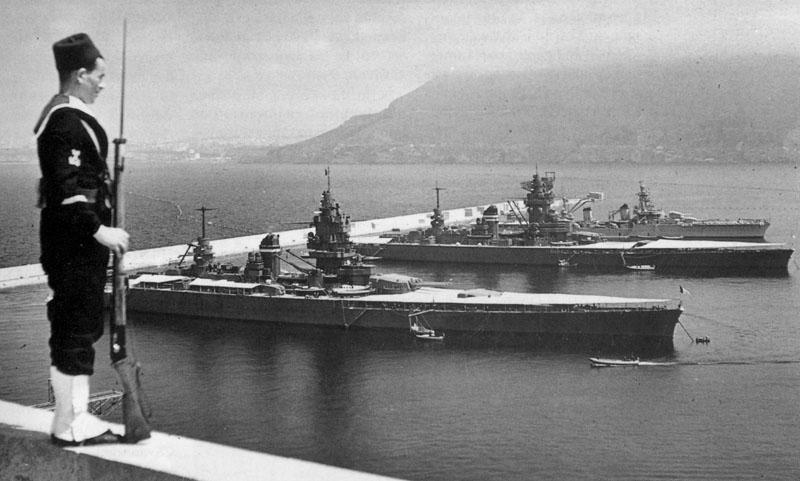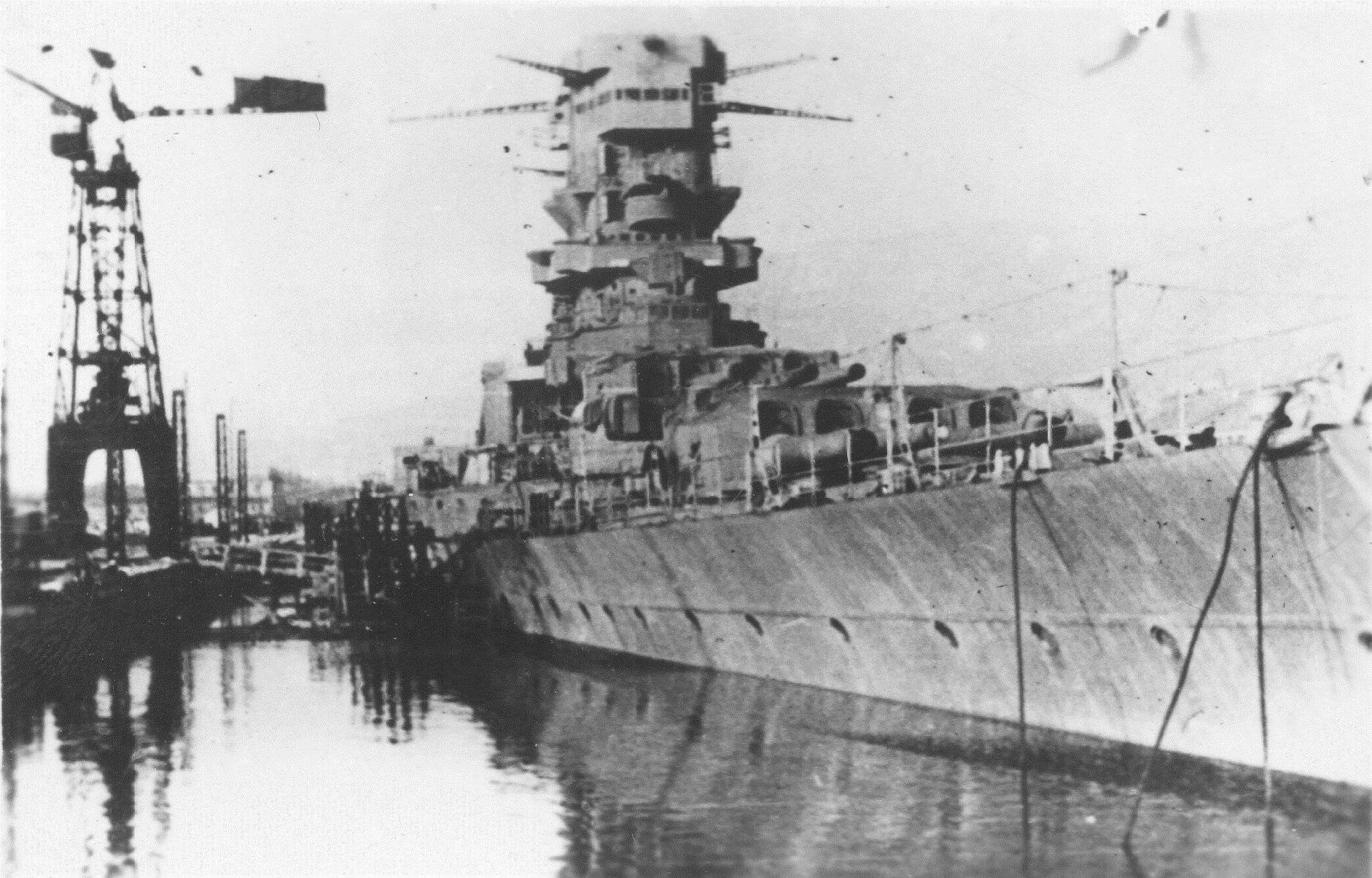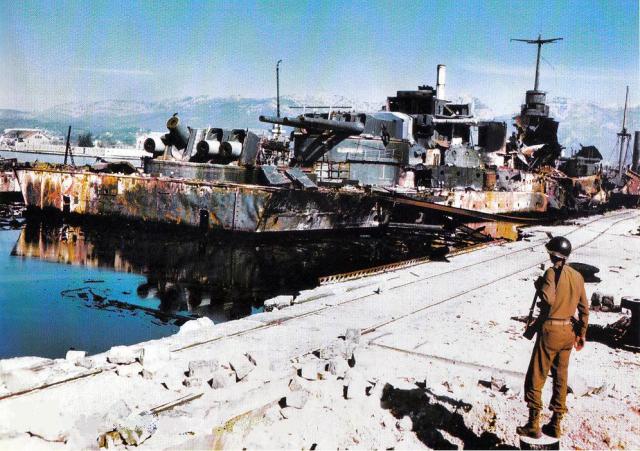NOTE : Adressed to @leroyonly , as requested for the Passed for consideration suggestion.
About Dunkerque and its interest in War Thunder
As the top tier race in War Thunder seems to be taking off quite fast in every tech trees, I wanted the French tech tree to be able to keep-up with the rest of the game, and the suggestions regarding capital warships which have appeared in other nations suggestions lately. Thus, I choose the battlecruiser Dunkerque for several reasons.
The first reason is that France has limited choices when it comes to the actual top-tier in War Thunder. With the arrival of the Graf Spee in the game, the most modern ship France would be able to align is the heavy cruiser Algérie, which is certainly a good design in its own category, but insufficient to face that kind of warships, be it the Graf Spee or the modern US heavy cruisers. Not to mention, the Dunkerque class was designed to answer the threat that represented the Deutschland class cruisers, and as such its introduction in the game would be a logical one since it would be the exemple of a counter against the German “pocket battleship”, which I’m sure, will not remain at the top of the food chain for very long anyway.
The second reason is that this design is unique to France. The 2 forward mounted turrets with 4 canons each is an interesting layout that I think would give the French tech tree an actual appeal for top tier, as it would be different from the rest of the futur capital ships in the game. Being a battlecruiser and not a battleship, it benefits from heavy artillery which is certainly more powerful than everything present in game right now while keeping a limited armor, a limited size and weight compared to WW2 battleships, not to mention its lacking AA armament compared to other ships at the time. It represents a good compromise between heavy cruisers and capital ships, and it seems to me that it could make a good top tier without crushing the competition.
The third reason is that the Dunkerque had a history. More tragic than glorious, certainly, but it fought during this war. Be it chasing the Deutshcland class or taking hits from the British, it fought. It’s a ship which I think deserves a place in the French fleet, as it is represents everything the French fleet wanted to be at the start of WW2 : a modern, fast fleet capable of spearheading any kind of naval battle for its time.
Oh, and after all, we already have a bit of Dunkerque in the game, have we not ? You know, the steel used to make the ARL 44.
Dunkerque battlecruiser
During the 1920’s the French navy was trying to find a way to rearm its fleet, severely lacking after the end of WW1. Although the Washington treaty had limited the size of its fleet and the scope of its modernisation, The biggest problem was the speed at which the rival fleets were developing. Be it the Italian fleet or the German fleet, they both were modernizing at an alarming rate. While the French navy was building its first heavy cruiser classes, the Regia Marina was creating fast, powerful cruiser killers that were much more modern than anything France was able to align. But it was first and foremost the creation of the Deutschland class in Germany which convinced the French navy to go for a ship capable of facing that kind of threat. They converted their first capital ship project into a 23000t battlecruiser project, which would fit two turrets equipped with 4 canons, in fact, the turret of the scrapped project Normandie from the 1920’s. Construction began in 1932, and was completed in 1936. During the whole year 1937, the guns were tested and judged adequate, although there were concerns, especially regarding the dispersion of the main battery and the poor rate of fire of the 130mm guns. After two voyages through the meditarean sea to test its worthiness at sea, it was finally operational.
Dunkerque was put into service in 1938, and although it was operating alone at first, it became quickly the flagship of the Atlantic squadron. Not for long, since less than a year later, WW2 started. At the time, it became the flagship of the Force de Raid, the main French fleet in the Mediteranean sea. Dunkerque joined with the British and patrolled the Atlantic ocean during the end of the year 1939, trying to find and sink the German Deutschland class, or any other German warship. Without ever facing any combat, it finally came back to Brest early 1940 for repairs. Indeed, the configuration of the ship was such that hard sea was difficult to handle, especially in the atlantic.
Between April and June 1940, Dunkerque and its fleet made several voyages between Brest and Mers el Kebir, chasing ghost fleets it couldn’t find. When Italy declared war in June, Dunkerque came back to the Mediteranean sea and expected a fight with the Italians, which never came. The Armistice was signed, and the Force the Raid, Dunkerque and its sister ship Strasbourg moored in Mers El Kebir. The war was over for them.
Well… It should have been. But a few days later, Operation Catapult came to be. A British fleet blockaded the port of Mers-el-Kebir and ordered the French fleet to comply to their demands or they would attack. The negociations failed, and the British opened fire. The French ships, moored toward the land, were not expecting a fight, and had little chance of firing back. During the fight, Dunkerque was hit by four 381mm shells, two went through the armored belt, one through the stern of the ship, and one in the turret 1. The damages were important, but not catastrophic. still, half a turret was destroyed, and the belt had been pulverised by the 381mm shells of HMS Hood. The British fleet sent Swordfish planes to finish the job the next day. Dunkerque was hit by a torpedo, and another ship filled with ammunitions, the Terre Neuve, was hit as well and exploded, heavily damaging Dunkerque. The battlecruiser was crippled, and had lost 250 men. Repaired during the following year, it came back to Toulon to join the rest of the fleet.
Dunkerque ended its carreer along many other ships in Toulon, during the scuttling of the Fleet in November 1942. It was later dismantled by an Italian company and its steel was used for the war effort after the liberation of France, for exemple in the construction of the ARL 44 heavy tanks.
General Characteristics :
Tonnage : 26500 tons (standard)
Length: 215.14m
Beam: 31.10m
Draught: 8.57m
Propulsion:* Parson steam turbines
- 6 Indret boilers
- 107 000 HP
Speed: 30.38 knots (56 km/h) during trials, 29,7 knots usually (55km/h)
Range:* 7856 nautical miles (11,000 km) at 15 knots - 2,450 nautical miles (5,190 km) at 28 knots|
Crew : 1381 men (81 officer, 1300 sailors)
Armor :
Vertical protection :
Main belt : 225mm
Front bulkhead : 210mm
Back bulkhead : 180mm (upper part), 150mm (lower part)
Horizontal protection :
Main deck : 125mm
Above the engine room : 115mm
Above the propellers 100mm
Conning tower :
Front and side : 270mm
back : 220mm
roof : 150/130mm
Main turrets :
Front : 330mm
Side : 250mm
Roof : 150mm
back : 345mm
130mm turrets :
front : 135mm
side : 90mm
roof : 90mm
Armament :
8 x 330mm mle 1931 canons (2 x 4)
16 x 130mm mle 1932 canons (3 x 4 on the back, + 2 x 2 on the side)
10 x 37 mm mle 1933 AA guns (5 x 2)
20 x 13.2 mm Hotchkiss mle 1929 MGs (5 x 4)
Regarding the 330mm turrets :
Hide contents
SPECS :
depression : -5°, +35°
rotation : 6°/s on 166° (turret 1) or 148° (turret 2)
weight : 67.535 tons
Length : 17.170m
330mm Shells :
AP shell Opf mle 1935 : 570kg, 20kg explosives
penetration : 342mm at 23 000m
Max range : 41 000m
Explosive shell Opfk mle 1935 : 522kg, 63kg explosives
Max range : 40 200m
Regarding the 130mm canons :
Hide contents
SPECS :
depression : -10°, +75°
rotation : 8°/s on 143° (back turret center) or 235° (back side turrets) or 212° (side turrets)
weight : quadruple : 200 tons, double : 81 tons
130mm Shells :
weight : 33.4kg (AP) 29.5 kg (EXP)
Max range : 20 800m (12 000m AA configuration)
Fire rate : 10-12 s/m
Regarding the AA canons :
Hide contents
37MM MLE 1933
SPECS :
depression : -15°, +80°
rotation : 360°
SHELLS :
Max range : 7 000m
13.2MM MLE 1929
SPECS :
depression : -10°, +90°
rotation : 360°
SHELLS :
Max range : 7 200m
Rate of fire : 200-250 rpm
PHOTOS :
PLANS :
Hide contents
PHOTOS :
Videos
SOURCES :
-JORDAN John - DUMAS Robert, French Battleships 1922-1956, Seaforth publishing, 2009
-MOULIN Jean, Les cuirassés français en images, Marines Editions, 2006
